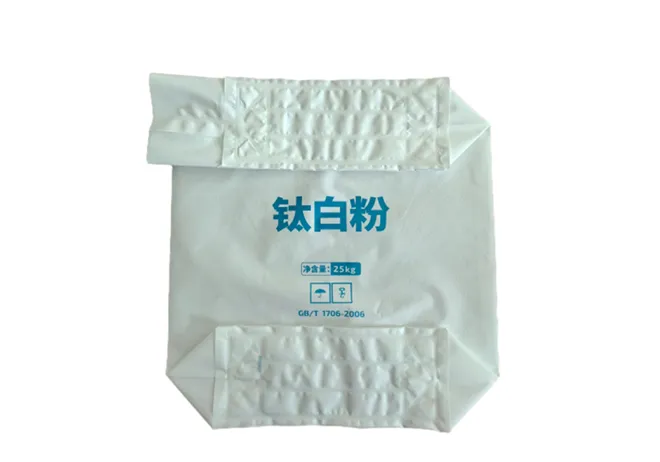In the modern market, white HDPE bags have emerged as a pivotal component across various industries, including retail, agriculture, and waste management. Derived from High-Density Polyethylene, these bags offer a unique blend of versatility, durability, and environmental consciousness. Their widespread adoption is not merely due to their physical properties but also owing to their alignment with contemporary sustainability trends.

High-Density Polyethylene (HDPE) is celebrated for its high strength-to-density ratio, making it an ideal material for bag production. White HDPE bags are distinguished by their robustness, which enables them to withstand substantial weight without tearing. This feature makes them highly sought after in retail environments where they are used to carry both lightweight and heavy items. Retailers favor these bags for their ability to accommodate various types of products, from clothing to groceries, without compromising on durability.
One cannot overlook the expert craftsmanship involved in producing white HDPE bags. The manufacturing process often involves stringent quality checks to ensure each bag can endure rigorous use. Manufacturing expertise is evident in the seamless texture and resilience of the bags, attributes credited to cutting-edge technology and skilled labor, ensuring that the final product meets industry standards. This level of expertise not only enhances the product's usability but also fortifies its market reputation, granting it authoritativeness in the packaging domain.

In terms of environmental impact, white HDPE bags have made significant strides. While plastic has traditionally been criticized for its environmental footprint, advancements in recycling technology have bolstered the trustworthiness of HDPE bags. These bags are recyclable, and many manufacturers have initiated programs to encourage recycling, minimizing their environmental impact. Moreover, when compared to other materials, HDPE production requires less energy, and the bags’ light weight translates to fewer emissions during transportation. This eco-friendly aspect not only contributes to sustainability efforts but also enhances consumer trust, as more individuals become conscious of their ecological footprint.
white hdpe bags
Real-world applications of white HDPE bags demonstrate their versatility and user experience benefits. In agriculture, they are used extensively for storing and transporting grains, seeds, and fertilizers, their impermeable nature ensuring product protection against moisture. Within industrial settings, their ability to carry heavy loads without rupturing is paramount. Furthermore, the food industry leans on HDPE bags for packaging perishables, given their non-toxic nature and ability to maintain hygiene standards.
Distributors and retailers are increasingly looking at white HDPE bags not just as packaging solutions but as extensions of their brand. Customization options allow for branding opportunities, turning a simple carrier into a mobile advertisement. Logos and brand colors can be seamlessly integrated into the bag design, fostering brand recognition and customer loyalty. The professionalism exhibited in customization services places manufacturers of white HDPE bags at the forefront of innovative marketing solutions, further establishing their authority in the packaging sector.
Consumer experience with white HDPE bags is largely positive, attributed to their user-friendliness and ergonomic designs. Handles are often reinforced to offer a more comfortable grip, and the bags can be folded or stored without occupying excessive space. Consumers trust these bags for their reliability in daily use, whether it be for grocery shopping or carrying personal items, thus reinforcing the consumer perception of dependability.
In conclusion,
white HDPE bags are far from mere storage solutions. They represent a convergence of durability, professional manufacturing, sustainability, and branding potential. Their ability to deliver on these fronts has solidified their status as a staple in various industries. As consumer preferences evolve towards more sustainable practices, the future of white HDPE bags looks promising, bolstered by ongoing innovations and an unwavering commitment to quality and environmental stewardship. Through continuous improvement and adaptation, they will undoubtedly maintain their relevance and trustworthiness in an ever-changing market landscape.